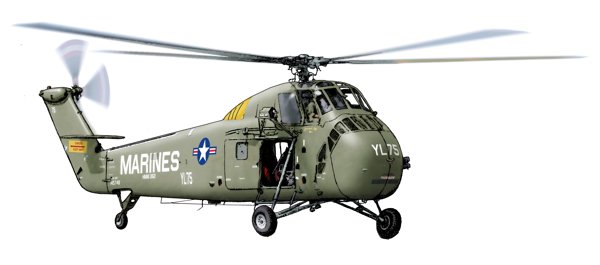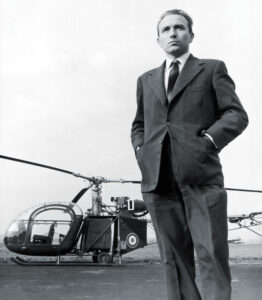 Late in the afternoon on March, 10, 1966, Colonel Charles A. “Chuck” House led 16 UH-34C Choctaw helicopters into the A Shau Valley to evacuate U.S. and allied soldiers from the besieged Special Forces camp there. Landing in a hailstorm of fire and chaos, they successfully pulled out 69 soldiers. But two UH-34s were shot down and seven other fixed- and rotary-wing aircraft were damaged. In the two days following, Colonel House’s squadron brought out 161 of the camp’s 186 survivors, including 10 of its 12 Special Forces advisers. More than 400 allied troops were lost. House’s squadron also suffered heavily. Twenty-one of his squadron’s 24 UH-34 helicopters had to be replaced. The mission exhibited the versatility and durability of the Choctaw.
Late in the afternoon on March, 10, 1966, Colonel Charles A. “Chuck” House led 16 UH-34C Choctaw helicopters into the A Shau Valley to evacuate U.S. and allied soldiers from the besieged Special Forces camp there. Landing in a hailstorm of fire and chaos, they successfully pulled out 69 soldiers. But two UH-34s were shot down and seven other fixed- and rotary-wing aircraft were damaged. In the two days following, Colonel House’s squadron brought out 161 of the camp’s 186 survivors, including 10 of its 12 Special Forces advisers. More than 400 allied troops were lost. House’s squadron also suffered heavily. Twenty-one of his squadron’s 24 UH-34 helicopters had to be replaced. The mission exhibited the versatility and durability of the Choctaw.
The Choctaw first flew on March 8, 1954, as the XHSS-1, essentially an upgrade of Sikorski’s successful H-19 used in the Korean War. Production versions came with a 1,525 shp engine, giving it an impressive lift capacity for its time. Initially ordered for the Navy, it was adopted by the Army in 1955 as the H-34 Choctaw, and in 1957 the Marines ordered it as the HUS-1 Seahorse. The Air Force and Coast Guard also acquired the type. Sold extensively overseas, it saw its first operational employment in the French-Algerian War where it was used primarily as a troop transport.
Designated UH-34C (Marines) and CH-34C (Army) after 1962, the Choctaw served in Vietnam with USMC and South Vietnamese forces. The U.S. Army did not deploy Choctaws to Vietnam, but did supply more than 100 to South Vietnam. The Marines used them extensively through 1968. Their simplicity made them more reliable and popular than early UH-1s. The Marines armed some UH-34s on a trial basis with two M-60C machine guns and two 19-cell 2.75-inch rocket pods. Called Stingers, they were America’s first attack helicopters. The trial wasn’t successful, but the kits were modified and became the model for kits used to arm UH-1E helicopters late in the war.
The Marines withdrew the last UH-34 from Vietnam in August 1969, but the “34” soldiered on in Reserve and National Guard units until 1974. Although more powerful gas-turbine-powered helicopters rendered piston-engine types such as the Choctaw obsolete, the UH-34’s simple, robust design made it one of the most popular commercial and military helicopters of its day. Some 1,800 were produced, serving in the military and security forces of 27 nations. Britain built a gas-turbine-powered version called the Westland Wessex that remained in service well into the 1980s.





